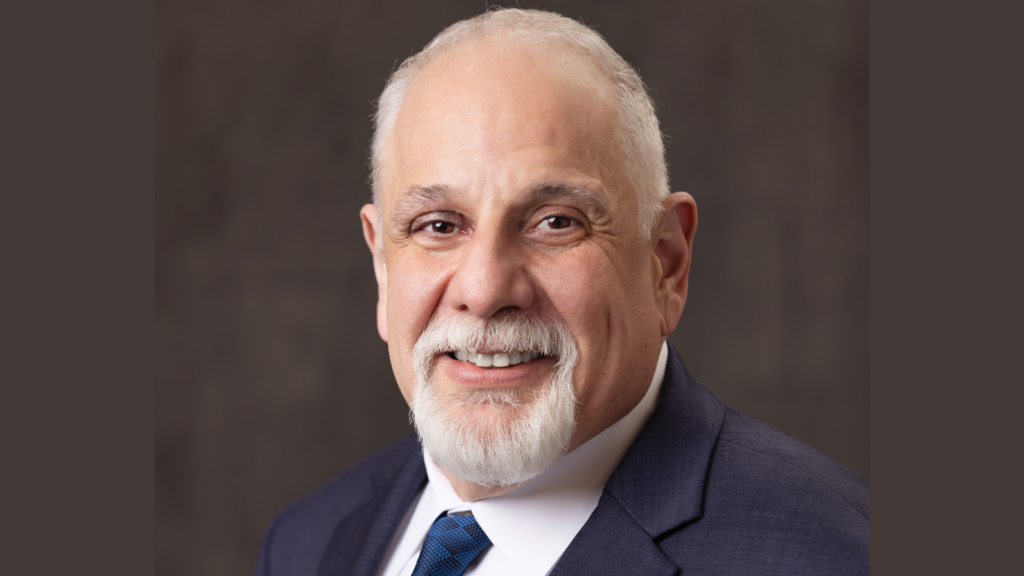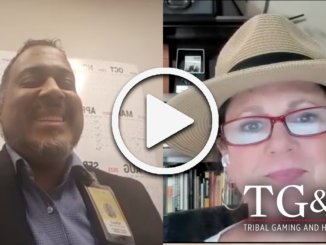Everyone is talking about “employee engagement,” but is it just another buzzword or a passing trend? Will it be on a year-end list of overused and misunderstood business terms? Like “paradigm shift,” “move the needle,” or “bandwidth?”
I don’t think so. The data is overwhelmingly supportive: Engagement has a powerful, positive impact on an organization’s success. Every organization must prioritize team member engagement at the core of its business strategy to be successful in today’s world.
Research supports the “why” and “what” (outcome), but as we all know, the real struggle happens in the “how.” How do we increase and maintain team member engagement?
Throughout this article, I intentionally use the term “team member” rather than “employee.” Why? Authentic engagement must be built on mutual commitment. It’s about more than just holding a job; it’s about having a purpose, contributing to a mission, and being a part of something greater than oneself. Team member engagement is the difference between clocking in and clocking out and showing up with intention, purpose, and a shared sense of mission.
What is team member engagement?
Engagement isn’t about ping-pong tables, casual Fridays, or even free lunches; it’s about creating a workplace culture where people feel valued, understood, and empowered to contribute their best every day. In today’s world, the old command-and-control model of management is outdated. Leadership today is rooted in influence, trust, emotional connection, and psychological safety.
Industry Example: A casino floor server notices that drink delivery delays are frustrating guests during peak hours. She recommends a modified sectioning plan that redistributes service zones more efficiently. The change reduces guest wait times, improves tips for the team, and boosts guest satisfaction scores. Leadership highlights her idea during a team huddle and integrates the model into future training.
A brief history of team member engagement
Though “engagement” became mainstream in the 1990s and early 2000s, the idea has existed far longer. Let’s examine its evolution.
- Frederick Taylor’s Scientific Management (late 1800s) prioritized productivity over people, but it set the stage for thinking critically about work.
- The Hawthorne Studies (1920s–30s) revealed a powerful insight: performance improves when team members feel valued.
- Maslow’s Hierarchy of Needs (1943) reminded us that belonging, esteem, and self-actualization are essential to human motivation.
- The Human Relations Movement (1950s–70s), led by thinkers such as Peter Drucker and Douglas McGregor, championed the idea of people as assets, not just labor.
- In 1990, William Kahn introduced the concept of personal engagement, setting the modern stage for how we think about connecting emotionally at work.
- Then came Gallup’s Q12 and McKinsey’s War for Talent, which linked engagement directly to business success.
Fast-forward to today, emotional intelligence and psychological safety are leading the conversation. Research from Google’s Project Aristotle and the work of Daniel Goleman and Amy Edmondson reinforce what many great leaders already know: Trust, safety, and human connection are the cornerstones of high-performing teams.
What drives engagement?
Now that we understand what engagement is and where it originated, the next question is: How do we achieve it? By establishing two foundational pillars — emotional Intelligence and psychological safety — which together drive authentic and lasting team member engagement.
The foundation: emotional intelligence (EQ)
Daniel Goleman defines emotional intelligence as “a person’s ability to manage feelings so that they are expressed appropriately and effectively.” That seems straightforward enough, yet so much goes into our emotional response.
As we experience something new, it flows through every recorded memory in our subconscious, quickly informing our conscious self how we “should” feel. This feeling happens so fast that it may seem like we do not have control over ourselves, and the expression is not what we may want it to be. Self-awareness teaches us that we are responsible for our triggers, not someone or something else. In that moment, we have freedom of choice. We are responsible for expressing ourselves appropriately and effectively, regardless of the experience.
A story Viktor Frankl tells in Man’s Search for Meaning about surviving the judgment of a Nazi commandant is chilling. In a moment of total loss and despair, he realized he still had the power to choose his response. That realization, in the face of unimaginable suffering, has stayed with me ever since I read his story.
His quotes deeply resonate:
“Between stimulus and response, there is a space. In that space is our power to choose our response. In our response lies our growth and our freedom.” He goes on to say, “Everything can be taken from a man but one thing: the last of the human freedoms — to choose one’s attitude in any given set of circumstances, to choose one’s own way.”
Today, nothing we face compares to what he endured. By all appearances, he was marked for death. Yet the growth and power he discovered within that space — the freedom to choose his attitude — kept him alive.
I’m not trivializing his experience. I am, however, using the example as an extreme. It amounts to hardcore ownership; it’s the only thing we have complete control over in the world.
Emotional intelligence within an organization
Every organization has a culture, good or bad. One thing remains constant: It starts at the top. Leaders must model the behaviors they want to see in others. Self-awareness, empathy, and emotional regulation are no longer “soft skills” but “power skills.”
Industry Example: A housekeeper returns from vacation to find their schedule has unexpectedly changed. Instead of reacting defensively, the supervisor listens with empathy, apologizes for the missed communication, and collaborates with the team member to find a fair solution. This demonstrates emotional regulation and trust-building in action.
Of course, we want technically savvy team members, but just as important are those who know how to carry themselves and interact with each other and our guests. Most skills within a resort environment can be taught, so many organizations are now hiring for emotional intelligence over technical ability. Increasing team member engagement is at the heart of this shift.
Emotional intelligence must be embedded in an organization. It all starts with the first interaction that a new team member has with your organization — hire for it, train for it, and evaluate it. It must be clearly defined, deeply valued, and universally expected from the C-suite to the front line.
A practical EQ tool: The Three Questions
The Three Questions is one of the most straightforward tools I use to build EQ. It’s beneficial during one-on-one coaching conversations when a team member navigates a challenging situation.
Before responding, I encourage them to ask themselves:
- Does this need to be said?
- Does this need to be said by me?
- Does this need to be said by me at this time?
These questions create a natural pause, a moment to reflect, reset, and respond with intention. They build emotional intelligence by reinforcing self-regulation and empathy. Over time, this becomes second nature. A simple reminder, such as “Remember the three,” is often all it takes.
The beauty of this practice lies in its accessibility. It’s not a formal program — it’s a conversation, a habit. It plants the seeds of emotional intelligence across the organization in a sustainable and impactful way. This impact follows that team member home in their personal relationships and within our communities.
Once emotional intelligence takes root, something powerful happens: Psychological safety emerges.
The next level: psychological safety
Psychological safety, as defined by Harvard’s Amy Edmondson, is “a belief that one will not be punished or humiliated for speaking up with ideas, questions, concerns, or mistakes.”
In Maslow’s hierarchy of needs, psychological safety falls under the second level — safety needs — extending beyond physical protection to emotional and mental well-being. It represents the need for stability, predictability, and freedom from fear or anxiety in one’s environment. When individuals feel psychologically safe, they are more willing to take risks, express themselves, and engage with others without fear of rejection or punishment. Without this foundation, people struggle to focus on higher-level needs, such as belonging, esteem, and self-actualization, making psychological safety essential for personal growth, healthy relationships, and effective collaboration.
So, what does this look like in the workplace?
Psychological safety in the workplace
Industry Example: During a brainstorming session at a hotel operations meeting, a front desk supervisor suggests changing the check-in process to include digital key options via the app. Another team member points out that older guests may be uncomfortable with that change.
Instead of shutting the idea down or criticizing either comment, the department head says:
“Great points from both of you. Let’s explore how we could offer digital keys as an option while still supporting guests who prefer the traditional approach. This kind of feedback helps us serve all our guests better.”
How does this show psychological safety?
- Team members feel safe offering ideas without fear of embarrassment or rejection.
- Differing opinions are welcomed and built upon.
- The leader encourages open dialogue and mutual respect.
When people feel safe, they speak up, share, and are emotionally involved. Innovation flourishes, learning accelerates, and connection deepens. How do I ensure my workplace is psychologically safe?
Practical steps to build psychological safety:
- Talk about it and prioritize it: Normalize conversations about psychological safety. Address misconceptions and make it a shared goal, rather than a critique of the current culture.
- Use the Psychological Safety Scale: Assess your team’s current state using a proven measurement tool to guide focus and improvement.
- Request input and promote conversation: Actively invite diverse viewpoints and ideas. Reinforce that contributions are valued, even when not adopted.
- Admit your mistakes: Model vulnerability. Share your missteps as opportunities for growth, signaling that failure is a step in learning.
- Continually reassess and adjust: Culture isn’t static. Regularly check in with team members and adapt to maintain and strengthen psychological safety.
Connecting the dots: EQ → psychological safety → engagement
- Emotional intelligence helps leaders communicate with empathy and awareness.
- That communication builds psychological safety, a culture where people feel heard and accepted.
- Psychological safety, in turn, drives engagement because people are more likely to invest their energy and creativity when they feel they belong.
It’s a virtuous cycle, and it must be cultivated, not commanded.
Final thoughts
Team member engagement is not a trend. It’s the foundation of a healthy culture, a productive team, and a resilient organization. It’s not about checking boxes but building a workplace where people thrive.
When leaders invest in emotional intelligence and psychological safety, they lay the groundwork for genuine engagement. And when that engagement takes hold, the results speak for themselves — in innovation, retention, performance, and, most importantly, in the lives of the people we lead.
Key takeaways for everyday application
- Hire and promote for emotional intelligence: Skills can be taught; emotional maturity and empathy are essential from day one.
- Use the “Three Questions” tool in daily conversations to promote thoughtful communication.
- Model vulnerability: Leaders should admit mistakes to create trust and psychological safety.
- Recognize small wins: Publicly acknowledge when a team member improves a process or serves a guest exceptionally.
- Prioritize feedback and dialogue: Don’t just listen — act on ideas from the front line.
The real question isn’t why engagement matters; It’s how we choose to build it daily.
Nick Aitoro is a respected leader in the hospitality and gaming industry, serving as Director of Facilities at Little Creek Casino Resort in Shelton, WA. His career began in Indian Gaming as a housekeeping manager at Muckleshoot Indian Casino, where he discovered the power of mentorship and operational excellence. Today, he oversees facilities operations for a growing destination resort that includes a hotel, casino, event center, and multiple dining venues.
Nick leads strategic planning, capital construction, sustainability efforts, and team development. Known for building high-performance teams, he blends emotional intelligence with disciplined execution. A passionate mentor, Nick is dedicated to developing future leaders and creating spaces where people and purpose thrive.




